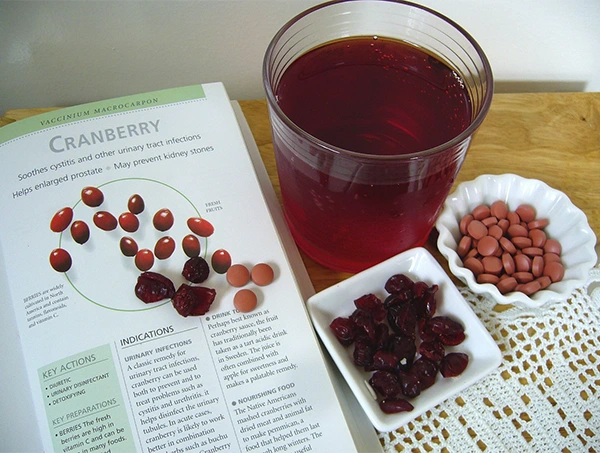What Is Vitamin P?
Vitamin P, also referred to as bioflavonoids, belongs to the class of compounds known as flavonoids. Naturally occurring plant pigments lend vibrant colors to fruits, vegetables, and even herbs. Flavonoids encompass a diverse group of compounds in various shapes, sizes, and colors, adding a symphony of hues to our plates and contributing to our health in ways we are only beginning to understand.
Flavonoid Food Chart
Wondering what foods you need to eat for a good amount of flavonoids daily? Here is a chart to help you incorporate flavonoids into your daily diet. But before that, understand what type of food each category represents.
- Red/Purple Group – offers antioxidant-rich anthocyanins for cellular protection.
- Orange/Yellow Group – provides beta-carotene for skin health and immunity.
- Green Group – supply quercetin and kaempferol for anti-inflammatory support.
- White Group – contributes to immune and cardiovascular health.
- Blue Group – offers anthocyanins that may enhance brain function.
- Brown Group – provides flavonoids like epicatechin, which supports heart health and mood.
| Red/Purple Group | Orange/Yellow Group | Green Group | White Group | Brown Group |
| Blueberries | Citrus fruits (oranges, grapefruits, lemons) | Broccoli | Onions | Dark chocolate (with high cocoa content) |
| Strawberries | Apricots | Spinach | Garlic | Cocoa powder |
| Raspberries | Peaches | Kale | Leeks | Coffee beans |
| Grapes | Nectarines | Brussels sprouts | Shallots | Dark chocolate (with high cocoa content) |
| Red cabbage | Mangoes | Green tea | White beans | Cocoa powder |
| Cherries | Carrots | Green peppers | White asparagus | |
| Red apples | Sweet potatoes | Green beans | Tofu |
What Is Vitamin P Used For?
Vitamin P’s significance lies in its multifaceted utility within our bodies. Flavonoids act as powerful antioxidants, scavenging free radicals that can damage our cells and contribute to aging and various diseases. Moreover, these compounds possess anti-inflammatory properties that help mitigate chronic inflammation, which is implicated in numerous health conditions, including heart disease, diabetes, and certain cancers.
What Is the Deficiency of Vitamin P?
While a deficiency of Vitamin P itself is not commonly recognized, inadequate intake of flavonoid-rich foods may deprive our bodies of the protective benefits these compounds offer. The modern diet’s shift towards processed foods often results in reduced consumption of fruits, vegetables, and whole grains—primary sources of flavonoids. This dietary imbalance could potentially increase the risk of oxidative stress and inflammation, which are linked to various health issues.
What Are the Rich Sources of Vitamin P?
Thankfully, nature has endowed us with a bountiful supply of flavonoid-rich foods that can easily be incorporated into our diets. Citrus fruits like oranges, lemons, and grapefruits are teeming with flavonoids, particularly the well-known flavones, flavanones, and anthocyanins. Berries, such as blueberries, strawberries, and raspberries, boast high levels of antioxidants, while vegetables like kale, broccoli, and onions contribute their fair share of these health-promoting compounds.
What Is the Health Benefit of Vitamin P?
1. Improves Cardiovascular Health
Flavonoids play a crucial role in promoting cardiovascular health. They are known to enhance the elasticity of blood vessels, reduce inflammation, and regulate blood pressure. Quercetin, a type of flavonoid, may help lower the risk of heart disease by reducing LDL cholesterol levels and inhibiting platelet aggregation. By improving blood circulation and maintaining the health of blood vessels, flavonoids contribute to overall heart well-being.
2. Provides Antioxidant Properties
Flavonoids are renowned for their potent antioxidant properties. They neutralize harmful free radicals in the body, thereby protecting cells from oxidative stress and potential damage. Quercetin, catechins, and anthocyanins are notable flavonoids that combat oxidative damage and support healthy aging. Their ability to counteract oxidative stress may reduce the risk of chronic diseases, including cancer and cardiovascular ailments.
3. Effects Anti-Inflammatory
Anti-inflammatory properties are the biggest health benefit of flavonoids. This helps them alleviate inflammation throughout the body. By modulating the activity of inflammatory enzymes and cytokines, flavonoids like curcumin and kaempferol may help manage conditions such as arthritis, asthma, and other inflammatory disorders. These compounds have the potential to curb chronic inflammation and promote overall well-being.
4. Supports Immune System
Many flavonoids exhibit immunomodulatory effects, contributing to a robust immune system. Quercetin, for instance, may enhance immune cell activity, helping the body fight off infections more effectively. Flavonoid-rich foods can fortify the immune system and improve the body’s defense mechanisms against various pathogens.
5. Benefits Cognitive Function
Certain Vitamin P is associated with improved cognitive function and brain health. Flavonoids like anthocyanins, found in blueberries, may enhance memory and cognitive performance. These compounds can protect brain cells from oxidative stress, reduce neuroinflammation, and lower the risk of cognitive decline and neurodegenerative diseases.
6. Prevent Cancer
Research suggests that flavonoids may have anti-cancer properties due to their ability to inhibit the growth of cancer cells and prevent tumor formation. These types of vitamins, like apigenin and genistein, can potentially interfere with various stages of cancer development, including cell proliferation, angiogenesis, and metastasis. While not a standalone solution, incorporating flavonoid-rich foods into your diet can be a part of a holistic approach to cancer prevention.
7. Manages Weight
Vitamin P’s potential to influence metabolism and fat oxidation makes them a topic of interest in weight management. Certain flavonoids, such as catechins in green tea, may enhance thermogenesis and increase energy expenditure, contributing to weight loss and maintenance when combined with a balanced diet and regular exercise.
The Bottom Line
Vitamin P, or more accurately, flavonoids, offers a fascinating glimpse into the intricate dance between nutrition and well-being. From their vibrant hues that grace our plates to their powerful effects on our bodies, flavonoids are a testament to nature’s wisdom.
By opting for a diet rich in colorful fruits, vegetables, and whole grains, we can harness the potential of Vitamin P and flavonoids to optimize our health and vitality. So, the next time you savor the burst of flavors in a handful of blueberries or the zesty tang of citrus, remember that you’re not just indulging your taste buds—you’re nourishing your body with the gifts of Vitamin P.




